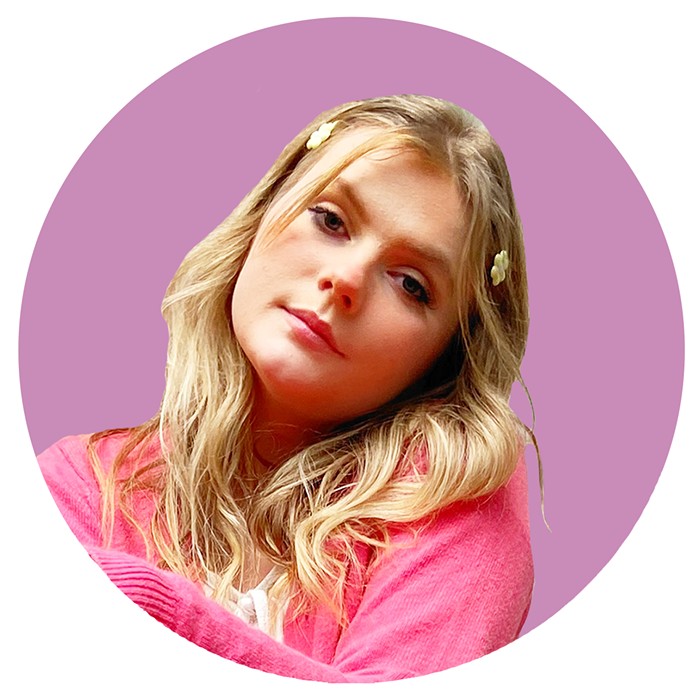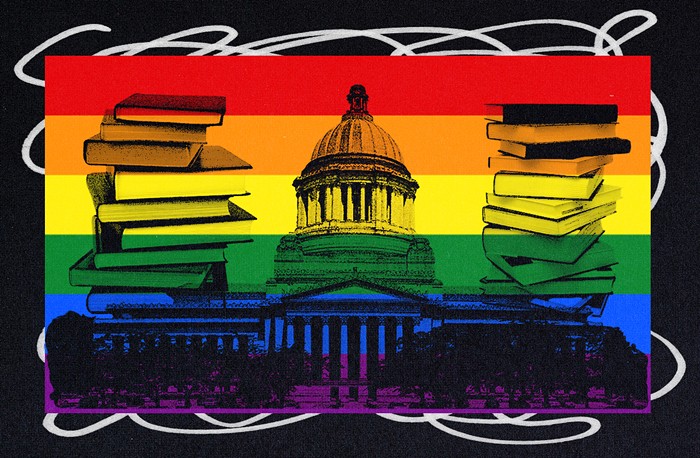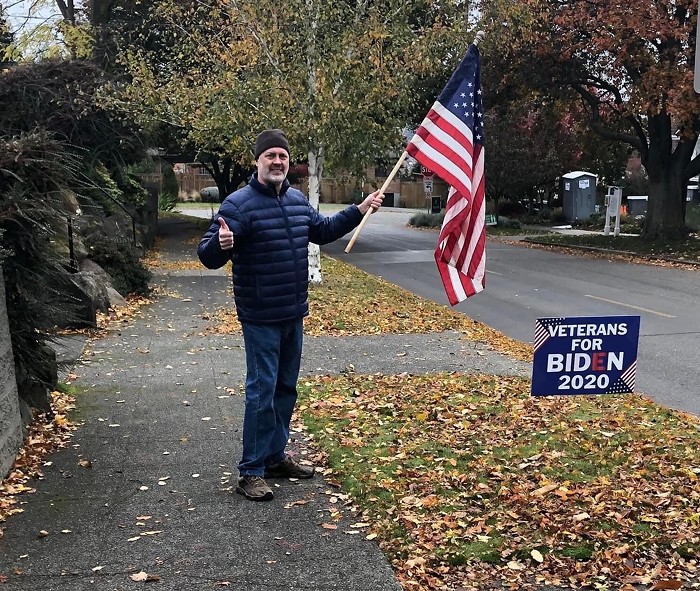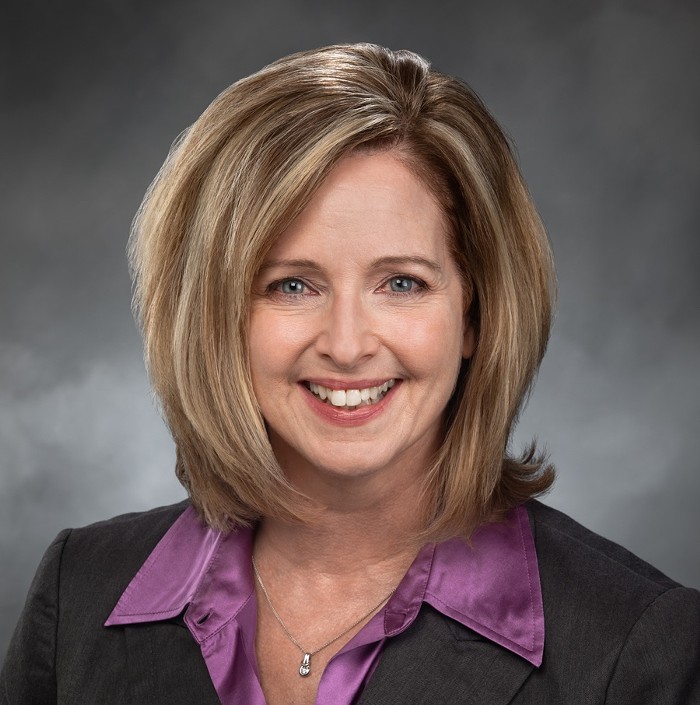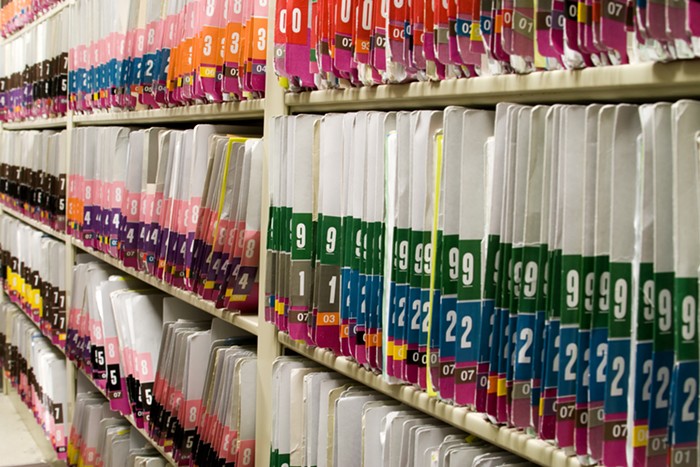
On Monday at 11 am, students from Seattle Public Schools (SPS) walked out of class and rallied at the John Stanford Center for Educational Excellence to demand the district reinstate its mask mandate.
“[The district] would rather have our family members die and have us deal with this for another five years than deal with some conservative parents complaining about how their mask itches,” one student said into the megaphone. “Get your shit together, SPS.”
On March 12, Gov. Jay Inslee ended a nearly two-year-long mask mandate for most indoor spaces. More than a week before that, on March 1, SPS said it would continue mandating masks despite anticipated rule changes. According to students, the superintendent advisory board met with the superintendent March 5, and said the district would end the mask mandate two weeks after spring break, which would be the end of April. Then, just four days later, on March 9, the district reversed course and announced it would end the mandate on March 14, a difference of several weeks.
The student protesters, led by the Seattle Student Union, demanded that the district reinstate the mask mandate and revisit the issue two weeks after spring break, similar to what students believed to be the original plan. Removing masks right now, the students said, was too soon.
The district has reason to remain cautious about masking. Not too long ago, in the midst of the Omicron surge in January, SPS went through a bout of school closures after about 5,000 staff and students reported catching COVID-19. Some seriously believed the district would return to remote learning.
“All you need is a quick Google search to know that Omicron is not fucking over,” said a freshman at Nova High school. Although the original Omicron strain peaked in the middle of January, a new, more highly transmissible subvariant of the virus is wreaking havoc in Asia and Europe.
With the fear of a potential incoming wave from across the globe, nearly every student speaker at the rally mentioned an immunocompromised loved one that they did not want to endanger by learning in a school with no rules on masks.
Luna, a student from the Center School, said her dad survived cancer and was now immunocompromised.
“It is not fair that me and my eight-year-old brother are putting him at risk every day just by going to school… It is not fair that I have a teacher who is immunocompromised and has to take care of her elderly grandmother, and now she is scared every single day coming into the building to teach us and nurture us and do what she loves. That is injustice.”

To protect immunocompromised people in their community, the students argued against taking an individualistic approach to public health. Masks work best when worn by everyone in the room, and some students are better about wearing them than others.
U.S. Congressional candidate Stephanie Gallardo, who is running a primary challenge against longtime Democratic incumbent Adam Smith, said she was a substitute teacher at Garfield when the mandate ended. She was pleasantly surprised that almost all students wore masks, but some students complained that they were the only ones in class covering their mouths and noses.
According to Chetan Soni, a sophomore at Lincoln High School, the mask culture is different in every class. He has some classes where he is the lone mask-wearer and others where everyone is covered up. But it’s usually all-or-nothing: The pressure of the majority, either way, sways others to comply with the social norms of the classroom.
Soni said his school launched an anti-bullying initiative in response to mask-related harassment. He said the crackdown on bullying prevents him from asking someone to wear a mask, or even expressing his own discomfort.
Even though several dozen students showed up, chanted, and spoke passionately about their concerns, SPS did not fold. Some students speculated that the district was trying to avoid a lawsuit from anti-maskers, or to fall in line with the Democratic party, who needs a “return to normal” in order to survive midterm elections. However, SPS said in a statement that the district simply followed Public Health – Seattle & King County’s lead, as it has done throughout the pandemic when it comes to mask requirements.
The statement toed a delicate line, trying to appease both sides of the argument.
“Understandably, there are many different beliefs, opinions, reasons, and comfort levels around this decision. SPS supports student voice and is committed to helping students and staff move forward through this time of transition with reassurance, empathy, and respect for the personal choice to mask or not,” the statement read.
In the same statement, the district said it “strongly encourages” students, staff, and visitors to wear masks when in school buildings. According to the district’s spokesperson, masks work as a good preventative measure against respiratory illnesses, but they are not the only tools. Schools will continue other strategies, such as “hand washing, strong air flow, testing, and physical distancing.” The spokesperson said these measures are subject to change.
